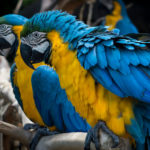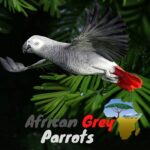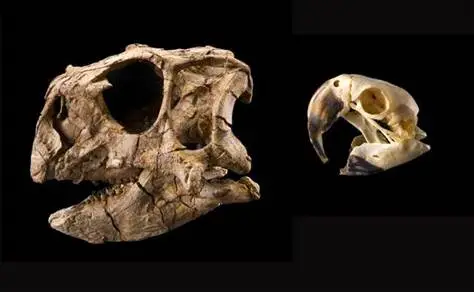
New World parrots Neotropical parrots
The fossil history of parrots Modern parrots New World parrots neotropical parrots are among the most distinctive birds in the world – there is little else with which they can be confused. One of the most obvious characters is the short, mobile decurved bill. This varies in its proportions and length among species but obviously is parrot-like in all. Even without the keratin sheath covering, the underlying bone retains the characteristic shape.
New Parrot-Like Dinosaur’s Fossils Found in Gobi Desert
SOURCE:TomoNews US
Modern parrots
Another trait is the zygodactyl toe arrangement. Most birds have the anisodactyl condition in which three toes point forwards and the fourth, where present, backward. Among living birds, only a few groups exhibit the zygodactyl arrangement: parrots, cuckoos (Cuculiformes), and most of the Piciformes (woodpeckers, puffbirds, jacamars, toucans, etc.). In these groups, the fourth (lateral) toe is fully and permanently directed posteriorly.
In several other bird groups, the feet are semizygodactyl (the fourth toe points laterally, rather than backward) or facultatively zygodactyl (the fourth toe can be moved into and out of a backward position).
This arrangement is reflected in the tarsometatarsus (the last long bone of the hindlimb, actually the foot bone). The distal end of the tarsometatarsus has protrusions, or trochlea, for the attachment of the toes. The trochlea for the fourth toe in zygodactyl birds has a laterally directed, wing-like extension and a posteriorly placed accessory trochlea or Sehnenhalter.
The latter serves as an articular surface for the reversed fourth toe. Its morphology differs among each group of zygodactyl birds. In modern parrots, there is a deep furrow between the accessory trochlea from the fourth trochlea. The presence of an accessory trochlea in a Fossil history of parrots is a good indication of that bird’s toe arrangement and is crucial for working out its relationships.
While the bill shape and toe arrangement are major features of parrots, they certainly are not the only ones that are useful for recognizing parrot relationships, but other features are much less obvious. These include such disparate characteristics as the development of projections and presence of incisions in the sternum, configuration of the articulations on the pectoral girdle,
Fossil parrot
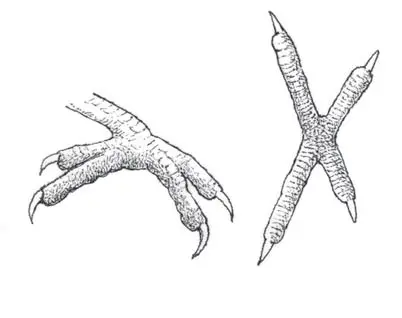
Fig. 1 Zygodactyl toe arrangement in modern parrots.
presence of openings for nerves in the coracoid, shape of the crest on the humerus for attachment of the pectoral flight muscle, arrangement of canals and ridges on the backside (hypotarsus) of the tarsometatarsus, relative lengths of the pedal phalanges (toe bones), among others.
Modern parrots are so distinctive that it has proved difficult to determine their closest living relatives among other birds and a number of different groups have been nominated particularly pigeons. Recent molecular analyses have produced a novel and
quite unexpected result. Studies by a range of different workers have been in agreement that the nearest living relative of parrots is the passerines, or songbirds (Passeriformes).
Songbirds, which comprise about 60 percent of all living bird species, are quite different in appearance. Other than for a few species with superficially curved bills, there is no resemblance to the characteristic parrot bill. Further, all songbirds are anisodactyl, with
none having a toe condition approaching that of parrots. A clue to clarifying this seemingly anomalous connection
between two very different looking groups came with the identification of a Fossil history of parrots group of zygodactyl birds, the Zygodactylidae.
First described in 1969, these small birds were known only from isolated and fragmentary leg bones from the early and middle Miocene (34–17 million years ago [mya]) of Europe. They now are known from North America and Europe, with a temporal range of early Eocene to middle Miocene (48–17 mya). In some deposits, these are among the most abundant small birds.
Although relationships of this group were uncertain, most authors placed them with the lineage containing woodpeckers
(Piciformes). The discovery of new specimens, including nearly
Fossil history of parrots
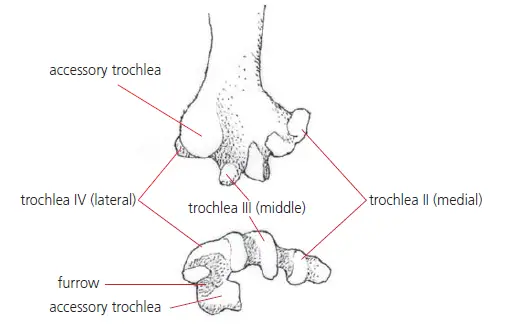
Fig. 2 Distal end of the tarsometatarsus of a modern parrot
showing the
accessory trochlea and furrow (after Mayr 2002b).
complete, articulated skeletons from the early Oligocene of France, permitted a reassessment of this idea. The skeleton of zygodactylids was very similar to that of songbirds, with some elements being almost indistinguishable. The long, slender, and quite a parrot-like tarsometatarsus, however, exhibited a fully zygodactyl toe arrangement.
More and better-preserved specimens have led to the conclusion that this family is the sister group to songbirds. These also start to bridge the morphological gap between the parrots and songbirds, which diverged many millions of years ago. The name Psittacopasseres has been created for this lineage of parrots, zygodactylids, and songbirds.
Modern parrots belong to crown-group Psittaciformes, that is, all living parrots, their common ancestor, and all its descendants, including extinct forms. In the early section of the lineage leading up to the crown group were a number of basal and now extinct taxa.
These are known as stem-group parrots (or simply stem-parrots). They exhibit earlier stages in the development of characters that make crown-group parrots so distinctive. The assignment of some of these Fossil histories of parrots as stem parrots is still controversial because some differences from living parrots are quite marked.
Some authors restrict the use of the name Psittaciformes to the crown group. For the crown and stem groups together, they employ the term Pan-Psittaciformes. The recognition of stem parrots has been subject to considerable ongoing revisions as a result of several factors. Partial fossils, sometimes comprising only a few bones or even one fragmentary bone, can be difficult to place in the avian classification.
There are characters in parrots that are shared also by other groups in which these have been acquired independently. The history of stem-parrot classification has seen taxa originally described as parrots subsequently being shown to belong to other groups.
Conversely, other taxa first regarded as belonging to another bird group have since been regarded as Psittaciformes. Some of the Fossil histories of parrots discussed here remain controversial and their placement as parrots is still tentative.
Parrots are one of the most characteristic components of modern avifaunas in southern continents. It has been speculated that the group had its origins in the southern supercontinent of Gondwana, but this may not necessarily be so. Many recent bird families occurring only in the Southern Hemisphere now are known to have Fossil history of parrots records from the Northern Hemisphere. Although prominent in the Southern Hemisphere at the present
Fossil history of parrots
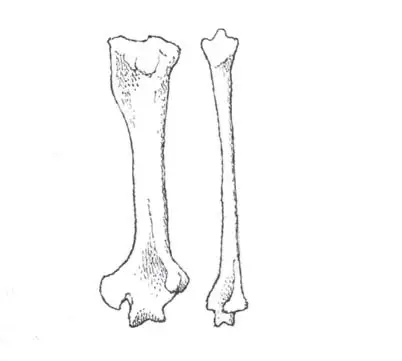
Fig. 3 Tarsometatarsi of (left) crown-group parrot and (right) zygodactylid
bird (not to scale) (after Mayr 2015a).
Crown-group parrot
time, parrots are not well represented in the fossil record of these continents, particularly in the older time periods. The record is sparse for much of the Tertiary (65–1.6 mya) and offers limited clues about the development and radiation of modern parrot groups. Most fossils are known only from the Quaternary (1.5 million years to the present) and comprise modern genera and even species.
The past few decades have been notably productive in the discovery of fossil parrots. Lambrecht (1933) in Palaeornithologie listed only five taxa under Psittaciformes, two of which were driven to extinction by Europeans during the Pleistocene.
Brodkorb (1971) in his Catalogue of Fossil Birds included only two pre-Quaternary species, five extinct Quaternary species, and a number of records of modern species recorded as fossils. Both authors included a bird now regarded as a stem-parrot but then classified elsewhere.
There now are more than 12 stem-parrot species recognized, as well as more than six extinct crown-group genera and a growing number of the Fossil history of parrots species in modern genera. The oldest putative record comes from the Late Cretaceous (Maastrichtian: 74–65 mya) Lance Formation in Niobrara County, Wyoming, United States.
Stidham (1998) based this identification on a tip of the lower bill, approximately 15 mm in length; this was a toothless, completely fused symphysis of the left and right mandibles, with small holes or foramina along the middle of the lingual surface, an absence of grooves or ridges on the walls, and a specific pattern of the neurovascular canals.
The shape of the tip was judged by Stidham to be most similar to that of lorikeets among living parrot groups. In addition to being the earliest known occurrence of parrots, this specimen would be the earliest record of a modern ‘terrestrial’ bird group.
Dyke and Mayr (1999) queried the assignment of this Fossil history of parrots as a parrot, pointing out that characters used in its identification are found in other groups of avian and non-avian vertebrates. Additionally, the morphology of this fossil differed from that of early Tertiary parrots from Europe, so it was suggested that at present the recognition of parrots from the Cretaceous should be considered tentative.
In response, Stidham (1999) noted that, although some of the characters are found in other groups, the particular states observed in the fossil occur only in parrots and, indeed, the combination of characters is unique to this group of birds. This intriguing fossil has not been restudied, nor have any more specimens been recovered that have a bearing on its identification.
In several instances, birds that originally were described as parrots subsequently have been shown not to belong to this
group. Harrison (1982) described 11 incomplete bones, putatively from a single bird, recovered from the early Eocene (57–52 mya) London Clay at Walton-on-the-Naze, in Essex, Britain, and to the same species he referred an incomplete distal tarsometatarsus from the middle Eocene (52–40 mya) of Hampshire.
Notably, the referred tarsometatarsal fragment was missing the fourth trochlea. This Fossil history of parrots was regarded as representing a parrot similar in size to the living Senegal Parrot Poicephalus senegalus, and the species was named Palaeopsittacus George.
From a comparison with skeletons of modern parrots, Harrison interpreted the morphology of the fossil bird to be more generalized than in recent forms and suggested that the wings were proportionately longer than in most living parrots, with the flight being generally less vigorous.
Features of the leg, including the position of attachment for the tendons used to pull the body towards the foot while climbing, prompted Harrison to propose ‘that climbing ability and a tendency to clamber among the branches was poorly developed or absent in Palaeopsittacus.
Other features suggested that the foot was capable of a more restricted range of movements, thus lacking the dexterity prominent in modern parrots. Olson (1985) noted that these fossils lacked most of the important features that characterize modern parrots, so referral of the specimens to the Psittacidae required confirmation.
Prehistoric Dinosaur Bird Fossils Found in China Are Amazingly Detailed | Smithsonian Channel
SOURCE:Smithsonian Channel
Fossil history of parrots
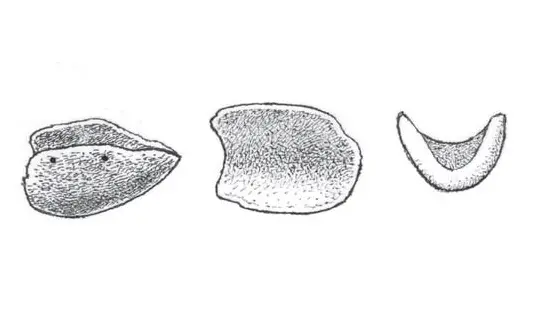
Fig. 4 Putative Cretaceous parrot bill (after Stidham 1998).
Mayr and Daniels (1998) reported on new material of Palaeopsittacus from the Walton-on-the-Naze site, including
a complete tarsometatarsus, that demonstrated that this bird was actually anisodactyl or, at best, facultatively zygodactyl and so was not a member of the Psittaciformes.
This bone further showed that the distal tarsometatarsal fragment referred to by Harrison did not belong to this taxon. Based on an analysis of relative sizes of bones originally described by Harrison, Dyke, and Cooper (2000) concluded that a proximal fragment of the ulna was not associated with the other specimens. They commented that this taxon should be ‘considered to be of uncertain status at present because of problems with the questionable association of the original specimens and their absence of any characters regarded as diagnostic at the ordinal level’.
A nearly complete, articulated post-cranial skeleton of Palaeopsittacus from Messel was described by Mayr (2002a). This provided further evidence that this genus was not related to parrots, but it did show some similarities to the frogmouths (Podargidae). Another case of misallocation to parrots occurred when Waterhouse et al.
(2008) announced two new birds from the Lower Eocene Fur Formation of Denmark. One was an indeterminate genus and species of the stem-parrot family Pseudasturidae (see below). For the other bird, the authors created a new genus Mopsitta. (The name is derived from the ‘Mo Clay’ from which this bird was recovered.) The species Mopsitta
Santa was described on the basis of a humerus, which Waterhouse et al.
considered to differ from other stem parrots by their larger size – about that of a medium-sized cockatoo – and features such as the greater curvature of the shaft. While they noted some similarities of the humerus to that of the early ibis Rhynchaeites, these were dismissed as not significant. The authors considered Mopsitta to be more similar to crown-parrots than to stem parrots and, further, that it likely was a member of Psittacidae s.l. (e.g. crown-group parrots). Mayr and Bertelli (2011) questioned the identification of Mopsitta as a parrot.
They were unable to confirm a number of the characters identified by Waterhouse et al. in support of this putative relationship, but they themselves noted features that they considered precluded the fossil being psittaciform. In contrast to Waterhouse et al., these authors noted a close resemblance between the bones of Mopsitta and those of Rhychaeites from Messel. Mayr and Bertelli considered Mopsitta to be a stem-ibis, not a parrot.
STEM-GROUP PARROTS
Most stem parrots are known from the Eocene (56–34 mya), mainly from the Northern Hemisphere. There are only a handful of Eocene localities producing bird fossils, of which only nine have yielded fossil parrots, and three of these are particularly important, together with having produced most of the Fossil history of parrots.
London Clay, England (early Eocene 56-49 mya) has yielded bird fossils from two main localities in the southeast of the country: Waltonon- the-Naze, Essex, and the Isle of Sheppey, Kent. Fossils from these sites are found as associated but disarticulated bones in clay nodules. The Green River Formation, Wyoming, United States
Fossil history of parrots
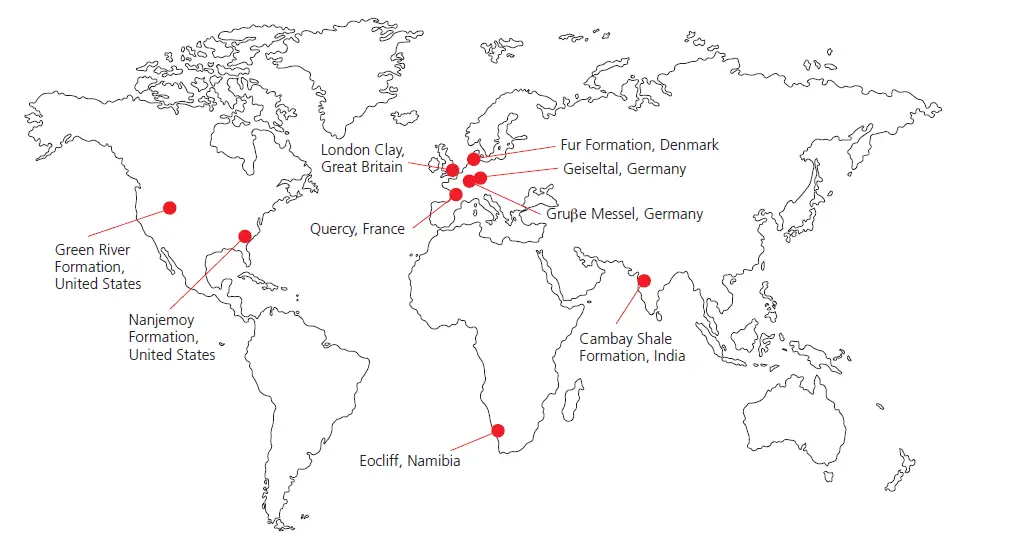
(53.5–48.5 mya) and Gruße Messel, western Germany (48 mya) both preserve animal and plant remains on slabs. These often are complete, although compressed, and may retain feather impressions. Stem-parrot representatives are known also from sites in France, Denmark, India, Namibia, the eastern United States, and elsewhere in Germany. Birds o comparable age to Palaeopsittacus were recorded by Mourer-Chauviré (1992) from the late Eocene (40–36 mya) Phosphorites du Quercy, at Le Bouffie, France, citing them at first only as Psittacidae.
She subsequently described them in detail from the coracoid, carpometacarpus, tibiotarsus, and tarsometatarsus (Mourer-Chauviré 1992). These birds had a combination of characters of modern parrots, such as the zygodactyl foot, and other more primitive features.
She recognized two new species, Quercypsitta sure and Q. ivani, for which she created the new, extinct family Quercypsittidae, to which also was referred Palaeopsittacus George, then still considered to be a parrot. Two interpretations of the Quercypsittidae were considered. The first was that these birds were the direct ancestors of modern parrots.
The second was that they were vicariant relatives of modern parrots, sharing a common ancestor, but evolving in the Northern Hemisphere, while other relatives evolved in the Southern Hemisphere. Eventually, the quercypsittids became extinct, while the southern birds survived and became successful. Mourer-Chauviré expressed a preference for the second of these two possibilities.
Mayr and Daniels (1998) reported on parrot-like birds from the London Clay and the middle Eocene deposits at Messel, Hessen, Germany. From the Messel specimens, they named Psittacopes Lepidus, a bird that was about the same size as a
Loriculus hanging parrot.
One of the most striking features was its bill shape; compared to that of modern parrots, the bill was short and rather shallow, particularly the maxilla, with large nostrils, and an overall superficial resemblance to the bill of the African mousebirds (Coliidae) was noted. This led Mayr (2015a) to propose that this bird fed on soft plant material, rather than seeds.
The family Psittacopedidae was created for the genus (Mayr 2015a). Three well-preserved specimens comprising mainly associated bones from the London Clay seem to be closely related to this species, but as all are held in a private collection, Mayr and Daniels chose not to formally name them. One, informally designated London Clay A, the largest of the three taxa, is known from most major bones and a skull.
London Clay B and C are less well represented. They are similar in size and morphology, but the latter has broader tarsometatarsus. There also are some isolated bones, including a skull, that cannot be assigned to either B or C with certainty.
Like Psittacopes, these unnamed species resembled crown-group parrots in their tarsometatarsus and other bones, but also had differences in the sternum, shoulder girdle, carpometacarpus, and relative lengths of the wing bones, prompting Mayr and Daniels to suggest that their flight characteristics differed from those of modern parrots. The two London Clay skulls also shared a rather coly-like bill.
Hindlimb elements similar to those of Quercypsitta sure also were found in the London Clay and differed from other specimens from this site in several features of the tarsometatarsus. Mayr and Daniels considered Psittacopes and
the three unnamed taxa to comprise the sister-group to modern parrots, while the Quercypsittidae was sister-group to these.
They concluded that parrots appeared to be a very ancient group, possibly diverging from other birds in the Palaeocene (66–57 mya) or earlier. Several important fossils initially were not regarded as having parrot affinities. It has only been as additional specimens of these taxa have been discovered and studied that a better appreciation of the skeleton has been possible.
Further, these make possible more useful comparisons between taxa not previously considered related. Mayr (1998) described several flattened and articulated specimens from the Messel site, several largely complete. The beak was short and robust, the supraorbital processes (the projection of bone above the orbits in modern raptors that contributes to their ‘scowling’ stare) were large and the tarsometatarsus had a Sehnenhalter present.
It was unsure if this bird was completely or facultatively zygodactyl, but the tarsometatarsus differed from all living birds, showing similarities to Quercypsitta. At least two, possibly three, species were present, for which Mayr created the generic name Pseudastur.
It was realized later that the name Pseudastur was preoccupied and so it was replaced with the name Pseudasturides (Mayr 2003). One species was formally named at the time Pseudastur macrocephalus (now Pseudasturides macrocephalus), another remained unnamed and a third provisionally was assigned to this genus. It was uncertain to what other group Pseudastur was related, but similarities to the skull of Messelastur, another fossil bird from Messel (see below), particularly the robust supraorbital processes, were noted.
An incomplete tarsometatarsus was described by Mayr (2002c) from the Geiseltal, Sachsen-Anhalt, Germany. This fossil, from a layer about the same age as Messel (48 mya), was very similar to, and probably conspecific with, P. macrocephala. Additional pseudasturid fossils from a slighter younger layer at this site (46 mya) came from a second and unnamed species in this family.
The family Primobucconidae was erected by Feduccia and Martin (1976) to accommodate several North American Eocene taxa that purportedly were zygodactyl and regarded as components of the Piciformes (these are now known also from Europe).
Following further preparation of the specimens, however, it was realized that the family as constituted was not a natural assemblage (Houde and Olson 1988) and eventually the genera were reallocated to three different orders. Only Primobucco remained in the Primobucconidae and is recognized as an early lineage of the rollers (Coraciiformes) (Ksepka and Clarke 2012).
One species initially placed in Primobucco, P. Olson, was found to be unrelated to the other members. Whereas the type species of Primobucco was anisodactyl, P. Olson was zygodactyl. When Mayr (1998) erected the Pseudasturidae, he noted that ‘Primobucco’ also was closely related to Pseudasturides and belonged in this family. The specimen on which the name is based was preserved in two slabs containing an almost complete skeletal impression plus some remnants of feathering. The head appears
Fossil history of parrots
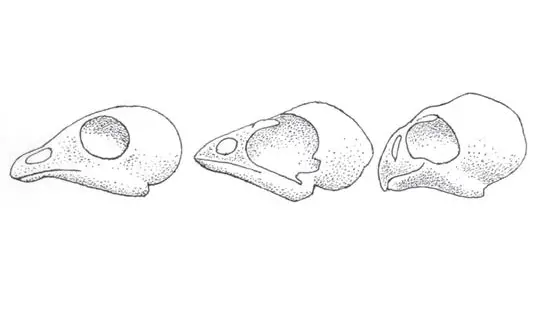
Fig. 5 Skulls of Psittacopes, Pseudasturides, and Messelastur.
Left: Psittacopes – tracing merged from two images using updated bill
shape (after Mayr and Daniels 1998; Mayr 2015a).
Centre: Pseudastur [Pseudasturides] (after Mayr 1998).
Right: Messelastur – tracing from photograph (after Mayr 2011).
The first fossil parrot
to have raised feathers in what might have been a crest (Ksepka et al. 2011). Dyke and Cooper (2000) described another fossil from the London Clay – Pulchrapollia gracilis (Pulchrapollia loosely translated means ‘pretty Polly’). From their analyses, Dyke and Cooper considered that this taxon was the sister-group to modern psittacines, being even more closely related to living parrots than Psittacopes.
The partial associated skeleton of Pulchrapollia exhibited, among other similarities with modern parrots, a fully zygodactyl foot. Dyke and Cooper also placed Quercypsitta between Pulchrapollia and Psittacopes in their phylogeny. After consideration of the fossil record, they believed that it could be ‘taken as strong evidence for a Tertiary radiation of Psittaciformes’ (Dyke and Cooper 2000).
Mayr (2001) showed that Pulchrapollia had several characteristics that were not found in any extinct or living parrots but agreed with the pseudasturids. He concluded that Pulchrapollia represented a taxon within this extinct family, whose relationships to other birds had not yet been established. A tarsometatarsus, the most complete known for any pseudasturid bird, plus some tentatively referred wing bones, were found in the early Eocene (53.6–52.8 mya) Nanjemoy Formation in northeastern Virginia, United States (Mayr 2016a).
Although not given a name, this bird closely resembles Pulchrapollia. Mayr et al. (2004) placed ‘Primobucco’ Olson in Pulchrapollia, but Martin (2010) later coined the generic name Cyrilavis for this taxon. In an analysis conducted by Ksepka and Clarke (2012), Olson did not link closely with Pulchrapollia, supporting its transfer to a new genus.
Mayr (2000a) named another member of this family from new Messel specimens. Serundaptus pohli had a fully zygodactyl foot. It closely resembled Pseudasturides, but was larger than species of this genus or Cyrilavis, and had a shorter, stouter tarsometatarsus, sporting long raptor-like claws.
Other features resembled those of a climbing bird, so Serandaptus might have been scansorial. Further London Clay specimens were reported by Dyke (2001) but were not identified beyond the family level (Pseudasturidae). Mayr (2002b) was able to redescribe the skeleton of Pseudasturides based on newly acquired specimens, and the additional material added further support to the psittaciform relationships of this group.
While examining comparative fossils in the British Museum, Mayr (2002b) recognized another pseudasturid among specimens referred to as the enigmatic London Clay genus Precursor. Three species of Precursor were described
Fossil history of parrots
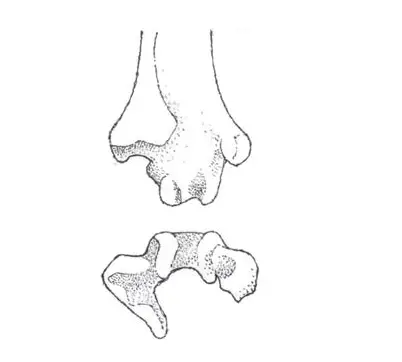
Fig. 6 Distal tarsometatarsus of Pseudasturides showing the incompletely
developed accessory trochlea (after Mayr 2002b).
by Harrison and Walker (1977) as pratincole-like birds. It now is considered that this genus comprises skeletal elements of several unrelated groups of birds. Among the remains, Mayr (2002b) recognized several that were, in fact, those of a form of the Pseudasturidae.
These remain unnamed, and the relationships of the remaining specimens of Precursor are unresolved. Koenig (1825) named Larus toliapicus on the basis of a partial skull, missing a beak and comprising mostly a damaged braincase. This was illustrated with a rather rudimentary sketch, but it was sufficient to make it the earliest named fossil bird.
Koenig regarded it as a gull, but subsequently, Owen (1846) considered it to be close to the kingfishers (Halcyonidae) and gave it the new generic name Halcyornis. There was no further study of this specimen until it received additional preparation, after which it was re-examined by Harrison and Walker (1972).
They interpreted its greatest similarity to lie with the Coraciiformes, particularly Coracii (rollers, etc.), and placed this genus in its own family, the Halcyornithidae. Nothing more was done with it until Mayr (2007), while studying new, well-preserved specimens of Pseudasturides, found similarities with Halcyornis that he regarded as demonstrating a relationship between the two.
These birds were close enough to be placed in the same family. A consequence of this was that the older family name Halcyornithidae took priority over Pseudasturidae. Micro-CT scans of the original skull of Halcyornis conducted by Walsh and Milner (2011) showed that this bird possessed an essentially modern type brain.
It probably had well-developed senses: high visual acuity, hearing perception similar to that of modern birds, and some reliance on smell. Walsh and Milner (2011) felt that the structure of the brain contradicted psittaciform relationships for Halcyornis, but made no further comment on its relationships.
Based on two specimens, Ksepka et al. (2011) described a second species of Cyrilavus from the Green River Formation. It differed from C. Olson by its larger size (20% longer) and small morphological characters. Like other specimens from this site, the new fossils were preserved flattened in slabs.
These showed that Cyrilavis contrasted with other genera by having longer beaks (slightly less than 50 percent of the skull length) and a claw on the alula. There also were prominent supraorbital processes. At present, the Halcyornithidae comprises five named genera– Pseudasturides, Halcyornis, Pulchrapollia, Serundaptus, and Cyrilavus – and several unnamed forms, such as that originally included in Precursor.
Peters (1994) gave the name Messelastur granulator to two skulls and a few associated vertebrae found at Messel. This bird had a decurved bill and obvious supraorbital processes. Messelastur tentatively was associated with the diurnal raptors (Accipitridae) in the original paper.
A subsequent, partial postcranial skeleton led Mayr (2005a) to propose that Messelastur was a possible link between owls and falcons. He also noted a probable relationship with a bird from the Green River Formation, Tynskya Eocene, although the only specimen of the latter was not well preserved and lacked some skeletal elements (Mayr 2000b).
Fossils similar to Tynskya also were recovered from the London Clay (unfortunately, these are part of a private collection and little else has been published on them). The affinities of Tynskya were not apparent, although it resembled owls and raptors in some aspects of its morphology.
A new, well-preserved, and nearly complete specimen of Messelastur was discovered at Messel (Mayr 2009), which, among other things, preserved the feet of this bird, which up to that time had not been known. This demonstrated, among other aspects, that the tarsometatarsus shared a number of characters with Tynskya.
This and other comparisons supported the relationship between these two taxa, while also showing that Messelastur had larger feet, more like a raptor. In addition to supporting the placement of Messelastur and Tynskya together in the same family (Messelasturidae), the new evidence supported a relationship between this group and the Halcyornithidae, since corroborated by subsequent studies.
The oldest fossil birds recovered from the Indian subcontinental plate were reported by Mayr et al. (2007). These are significant because this area was a section that broke off from the giant southern landmass Gondwana, in contrast to other stem parrots known at the time, all of which came from the Northern Hemisphere.
The specimens come from the Vastan Lignite Mine, Gujarat, India. They comprise incomplete coracoids and scapulae, quite different from any other birds of this age then known. Mayr et al. (2007) gave these the name Vastanavis eocaena.
Fossil history of parrots
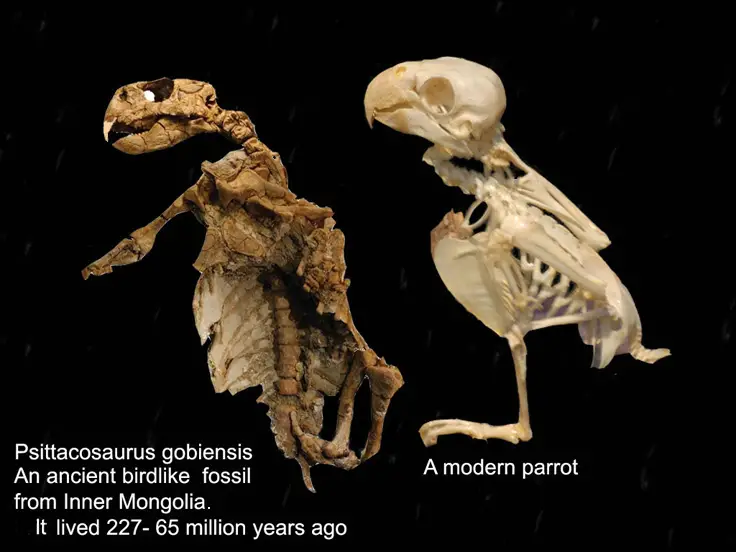
The fossil history of animals parrots
At the time it was not obvious to what other group the fossils were most closely related. Although a resemblance between the coracoid and that of bustards was noted, it was not considered definitive. Further bird remains found at the site, including a tarsometatarsus, also were referred to Vastanavis by Mayr et al. (2010).
The new material helped reveal the parrot affinities of this genus. Some differences in morphology and size led to the recognition of a second species, V. cambayensis. A number of additional bones obviously belonged in this genus, but could not be determined to species. The structure of the tarsometatarsus showed that species of Vastanavis were semi-zygodactyl, and in overall morphology, they were similar to Quercypsitta. Mayr et al.
(2010) created a new family, Vastanavidae, for these taxa. Some phylogenetic analyses indicated that the family was sister to the remaining Pan-Psittaciformes. Mayr et al. (2013) subsequently described additional remains, which now represented most of the post-cranial skeleton, but the skull and beak remain unknown.
A small coracoid in the new material may represent another species of Vastanavis, but this was not named owing to the fragmentary nature of the specimen. London Clay specimens that originally were assigned to Quercypsitta by Mayr and Daniels (1998) were considered closer to Vastanavis (Mayr et al. 2010). Another stem-parrot, Avolatavis tenens, came from the Green River Formation (Ksepka and Clarke 2012).
The new specimen comprised a pelvis, hindlimb, and caudal vertebrae. It differed from similar forms by its wider pelvis. The zygodactyl or semizygodactyl toe arrangement point to an arboreal lifestyle. Other morphological features suggest differences from other stem parrots, including a large pygostyle that could mean that the tail feathers had been larger and more developed than in other stem parrots. It has not been allocated to any of the currently recognized families. Stem-parrots were diverse in the Green River Formation – this was the fourth species known from this site – but not particularly common.
The only stem-parrot known from Africa is Namapsitta praeruptorum, based on a distal end of a tarsometatarsus and referred complete ulna from a middle Eocene site from Eocliff, Namibia (Mourer-Chauviré et al. 2015). The accessory trochlea has the configuration of modern parrots, but other features of these specimens differ from extant groups.
Namapsitta exhibits some similarities with Psittacopes but differs from this and other stem parrots in a number of characters. The unusual Eurofluvioviridavis robustipes from Messel, Germany, combined a flycatcher-like beak, long legs, short toes, and robust claws (Mayr 2005b).
Some similarities between the tarsometatarsus of this species and that of Quercypsitta were identified by the author, who noted that the Eurofluvioviridavis was probably only facultatively or semi-zygodactyl. A later analysis that incorporated Eurofluvioviridavis, as well as stem-parrots not included in the previous studies, recovered a tentative grouping of this taxon with Avolatavis and Vastanavis (Mayr 2015b), suggesting that it too may be a stem-parrot, albeit one with a bill morphology unlike any other known member of Psittaciformes past or present.
Only a handful of these stem-parrot fossils include the skull and beak. What is clear is that the characteristic beak of modern parrots had not yet evolved. For those stem-parrot fossils that include a beak, there are some clues as to their ecology.
The large supraorbital processes and somewhat hooked beaks of the pseudasturids, and especially the messelasturids, have led some authors to propose relationships with raptorial birds, a connection that still has some support. It is possible that these birds were carnivorous early relatives of parrots, a suggestion strengthened by the raptorial foot in the Messelasturidae.
There is little consensus on relationships of any of these stem parrot groups to modern crown-group parrots, nor to each other. Psittacosis or Quercypsitta (sometimes together with Avolatavis) most often have been regarded as the sister taxon to crown-group parrots.
Vastanavis usually is recovered as one of the earliest diverging lineages. One of the few aspects that are becoming
generally accepted is an alliance between Halcyornithidae and Messelasturidae, although the placement of these as an early psittaciform lineage remains tentative, and some analyses maintain a placement with birds of prey.
Fossil history of parrots
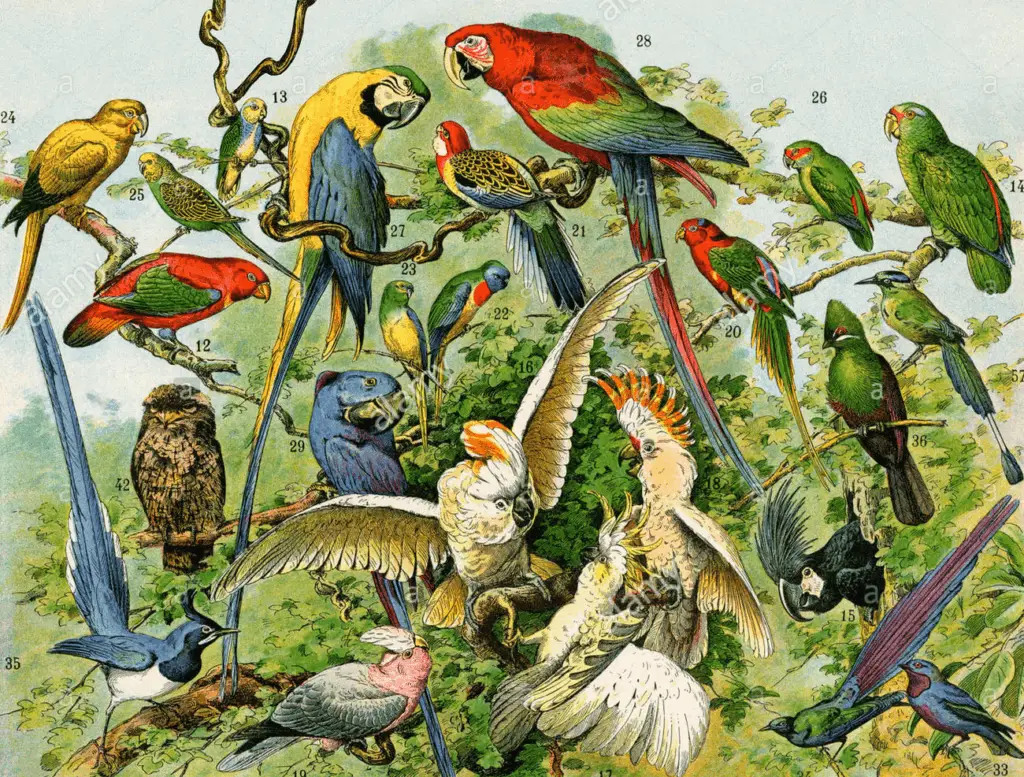
As new taxa are discovered, existing ones re-examined, and additional characters described, incorporation of new information into phylogenetic analyses alters the conclusions, hopefully resulting in an increasingly refined outcome. An example of how the inclusion of new taxa in an analysis can change the outcome is the systematic position of Psittacopes.
Initially, it was considered to be the closest of these fossil families to crown-group parrots. When representatives of the early passerine relatives Zygodactylidae, as well as Psittacopes, were incorporated into an analysis, the latter shifted from a position in the Pan-Psittaciformes to one as a stem-taxon in the passerine-zygodactylid lineage, together with some other odd zygodactyl fossil genera.
Most of the characters that Mayr and Daniels (1998) initially had identified as linking Psittacopes to parrots occur also in the passerine zygodactyl id lineage. In addition, it also shared with that group some other features not found in parrots. Mourer-Chauviré et al.
(2015) commented on similarities between Namapsitta and Psittacopes, and Mayr (2016b) recommended that the former taxon be further studied to see if it might be better considered as another passerine-zygodactylid stem taxon.

